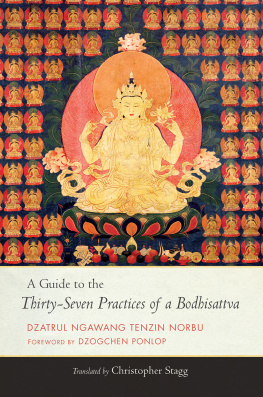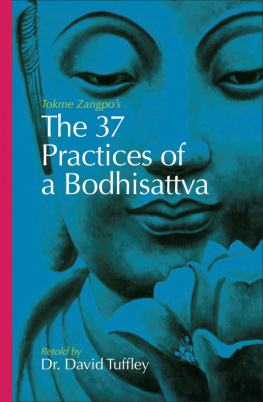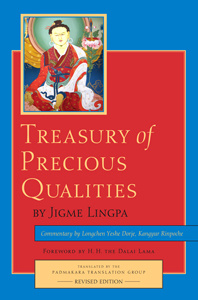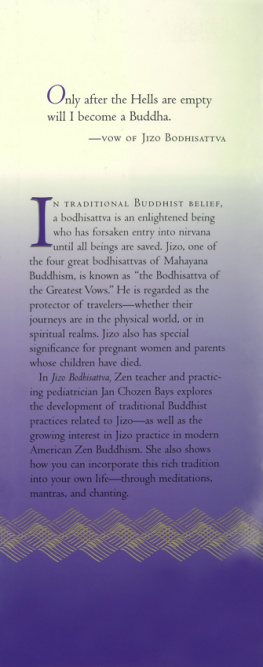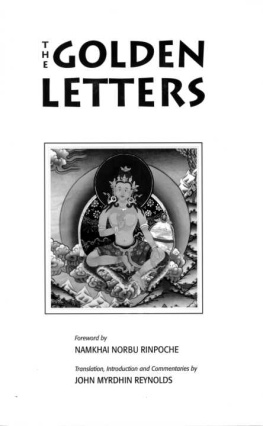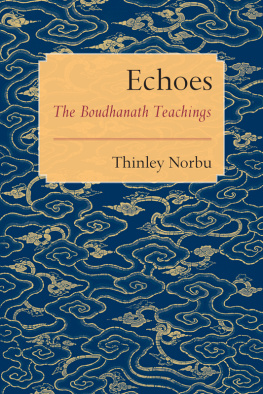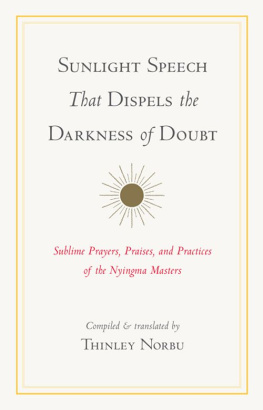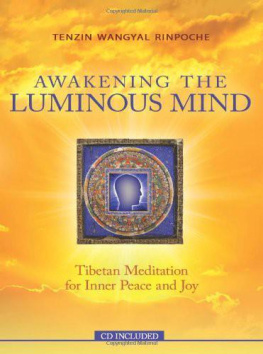Ngawang Tenzin Norbu - A Guide to the Thirty-Seven Practices of a Bodhisattva
Here you can read online Ngawang Tenzin Norbu - A Guide to the Thirty-Seven Practices of a Bodhisattva full text of the book (entire story) in english for free. Download pdf and epub, get meaning, cover and reviews about this ebook. year: 2020, publisher: Shambhala, genre: Religion. Description of the work, (preface) as well as reviews are available. Best literature library LitArk.com created for fans of good reading and offers a wide selection of genres:
Romance novel
Science fiction
Adventure
Detective
Science
History
Home and family
Prose
Art
Politics
Computer
Non-fiction
Religion
Business
Children
Humor
Choose a favorite category and find really read worthwhile books. Enjoy immersion in the world of imagination, feel the emotions of the characters or learn something new for yourself, make an fascinating discovery.
- Book:A Guide to the Thirty-Seven Practices of a Bodhisattva
- Author:
- Publisher:Shambhala
- Genre:
- Year:2020
- Rating:3 / 5
- Favourites:Add to favourites
- Your mark:
- 60
- 1
- 2
- 3
- 4
- 5
A Guide to the Thirty-Seven Practices of a Bodhisattva: summary, description and annotation
We offer to read an annotation, description, summary or preface (depends on what the author of the book "A Guide to the Thirty-Seven Practices of a Bodhisattva" wrote himself). If you haven't found the necessary information about the book — write in the comments, we will try to find it.
A Guide to the Thirty-Seven Practices of a Bodhisattva — read online for free the complete book (whole text) full work
Below is the text of the book, divided by pages. System saving the place of the last page read, allows you to conveniently read the book "A Guide to the Thirty-Seven Practices of a Bodhisattva" online for free, without having to search again every time where you left off. Put a bookmark, and you can go to the page where you finished reading at any time.
Font size:
Interval:
Bookmark:
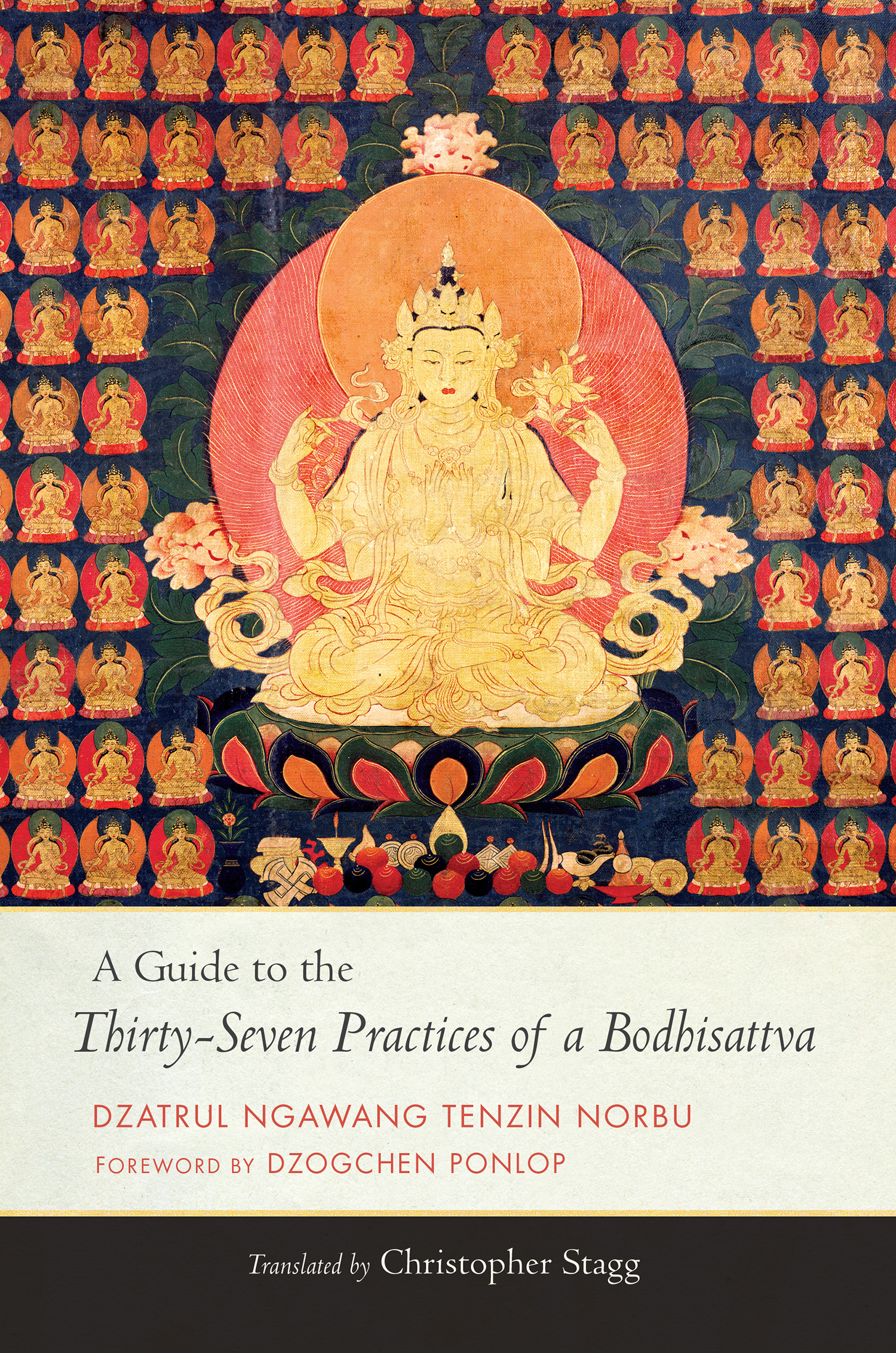
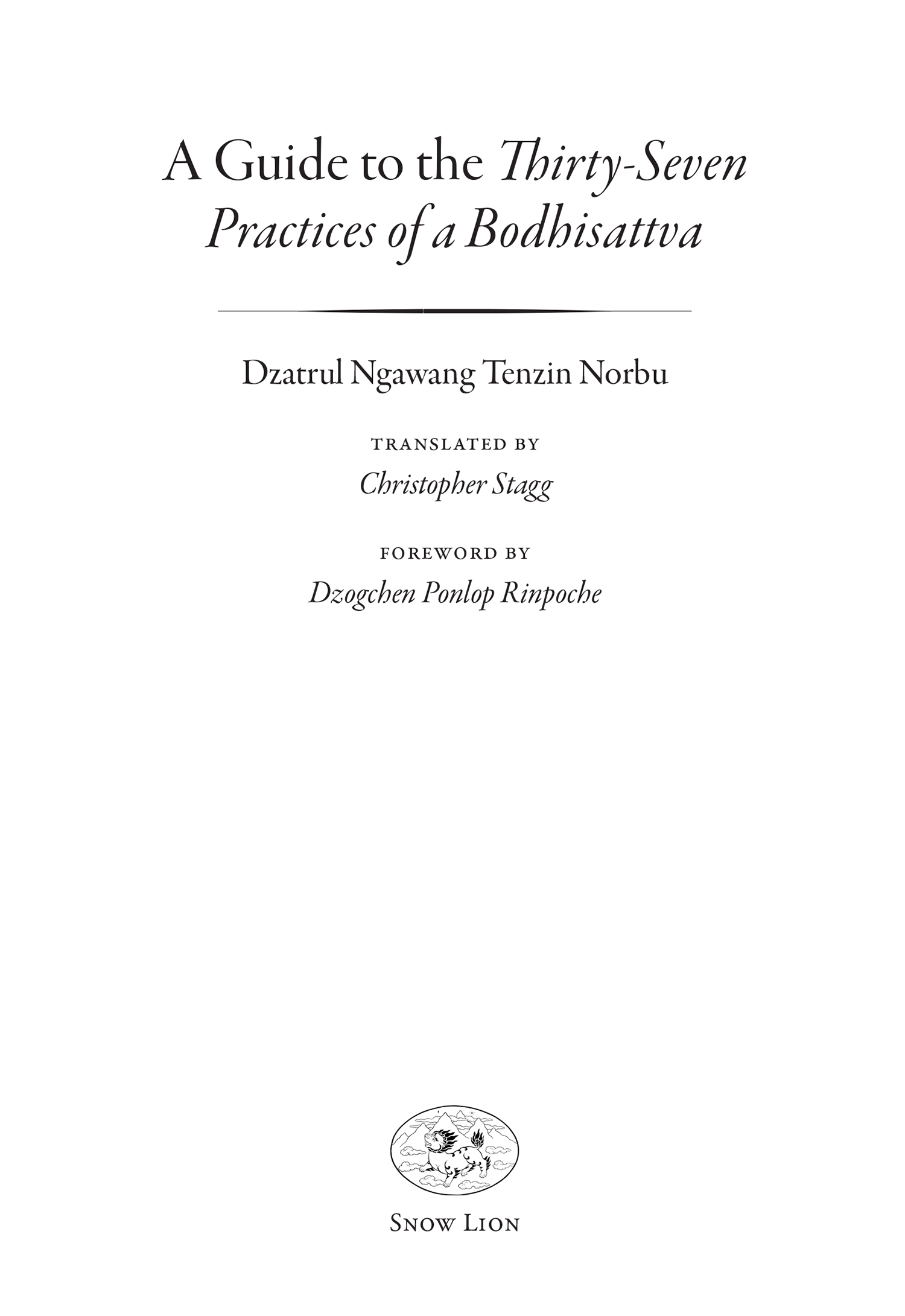
Snow Lion
An imprint of Shambhala Publications, Inc.
4720 Walnut Street
Boulder, Colorado 80301
www.shambhala.com
2020 by Rita Stagg
Photo of Chris Stagg on by Rysiek Frckiewicz
Cover art: The All-Seeing Lord with Four Arms, Avalokiteshvara, Chaturbhuja. Tibet; 18th century. Pigments on cloth. Rubin Museum of Art. Gift of Shelley & Donald Rubin Foundation. f1997.31.3 (har 399)
All rights reserved. No part of this book may be reproduced in any form or by any means, electronic or mechanical, including photocopying, recording, or by any information storage and retrieval system, without permission in writing from the publisher.
LIBRARY OF CONGRESS CATALOGING - IN - PUBLICATION DATA
Names: ag-dba-bstan-dzin-nor-bu, Rdza Ro-phu Bla-ma, 18671940. | Stagg, Christopher, translator. | Dzogchen Ponlop, Rinpoche, 1965, writer of foreword.
Title: A guide to the thirty-seven practices of a bodhisattva / Ngawang Tenzin Norbu; translated by Christopher Stagg; foreword by Dzogchen Ponlop Rinpoche.
Other titles: Rgyal sras lag len so bdun gyi grel pa gu da gdams ag zu jug Bdud rtsii bum bza. English
Description: First edition. | Boulder: Snow Lion, 2020. | Translation of: Rgyal sras lag len so bdun gyi grel pa gu da gdams ag zu jug Bdud rtsii bum bza. | Includes bibliographical references and index.
Identifiers: LCCN 2019037331 | ISBN 9781559394918 (hardback)
eISBN 9780834842861
Subjects: LCSH : Rgyal-sras Thogs-med Bzang-po-dpal, 12951369. Rgyal-sras lag len so bdun maCommentaries. | Enlightenment (Buddhism)Requisites. | Religious lifeBka-gdams-pa (Sect)
Classification: LCC BQ4399 . N3313 2020 | DDC 294.3/442dc23
LC record available at https://lccn.loc.gov/2019037331
a_prh_5.5.0_c0_r0


In our day-to-day life situations, we are presented with all kinds of challenges. When we look outside, we find dire situations everywhere in the world affecting people, animals, and our environment. And when we look inside, we find the ups and downs of our physical, mental, and emotional experiences that fluctuate as unpredictably as the stock market. In the midst of all the chaos, it seems difficult to find a peaceful spot or kindness for each other in our lives.
The Thirty-Seven Practices of a Bodhisattva presents an alternative way of thinking, of relating to the outer and inner worlds of everyday living. It is a refreshing, revolutionary, and radical approach to a life that is worth exploring.
T HIS B OOK
In the traditional framework of Mahayana wisdom, the revolutionary approach presented in this book is known as the bodhisattva way, the heroic path of the mind of wakefulness. Thus, The Thirty-Seven Practices is a training manual for thinking outside of our usual boxes of culture, religion, and self-centeredness. If your approach of thinking inside the box has worked well and fulfilled your dreams of happiness, The Thirty-Seven Practices is not a must-have manual. The root text contains thirty-seven key points for working with our mind, first through tamingfinding a way to bring the mind home, to a state of calmness and clarityand then through cultivating the heart of kindness and compassion. It is, in fact, a practical guide on how to follow the path of the bodhisattvas, verse by verse.
By way of a brief literary background, this practical manual of working with bodhichitta, the awakening heart, belongs to the Mahayanas Kadampa school, founded by the Indian master Atisha (9821054). The connotation of Kadampa is that all the words (ka) of the Buddha are taken as personal instructions (dampa). Thus there are no words left behind in books as mere theory; they are all applied in action as practice. The Kadampas emphasize the gradual, stage-by-stage path known as the lamrim (stages of the path) approach of the three types of individuals; one of their main contemplative methods is the use of guiding maxims or verses, such as the slogans of lojong (training the mind or mind transformation).
The three renowned and indispensable guidebooks of the Indian and Tibetan Mahayana tradition are Langthangpas (10541123) Eight Verses of Training the Mind, which is the shortest, most condensed work; Tokms Thirty-Seven Practices, the medium-length text; and Shantidevas (685763) Bodhicharyavatara, or Entrance to the Way of a Bodhisattva, the extensive presentation.
T HE A UTHOR OF THE R OOT T EXT
The Thirty-Seven Practices was written by Dharmabhadra Ngulchu Tokm (685763). He was born in a small town in the Tsang region of Tibet. From birth, he showed great qualities of kindness and compassion; for example, in his early childhood, in the midst of a bitterly cold winter, he saw a heap of small insects freezing to death. Unable to bear the sight, he took off his only garment and covered them with it. Tokms childhood was not an easy one. He lost his mother and father at the tender ages of three and five, respectively, and was thereafter raised by his maternal uncle. Despite this intense hardship, he seized his misfortune as an opportunity to discover and follow the path of the Buddhas Mahayana teachings.
Tokm studied with many great masters of his time, including Butn (12901364), and it was during his early years of study that he received the name of Tokm (unhindered, referring to his capacity for understanding and learning). He later studied and mastered the Five Treatises of Maitreya/Asanga, which strongly influenced his view and practice of the Mahayana path.
Ngulchu is the name of the region in central-western Tibet where Tokm lived and wrote his famed text. Since then, The Thirty-Seven Practices has gained the status of one of the foremost Tibetan-authored sourcebooks for kindness and compassion, the journey of the Mahayana lifestyle.
T HE A UTHOR OF THE C OMMENTARY
The Thirty-Seven Practices is further elucidated in A Guide to the Thirty-Seven Practices of a Bodhisattva by the nineteenth-century Tibetan master Dzatrul Ngawang Tenzin Norbu (18671940; see Translators Introduction). The commentary explains not just the root texts theory but also its experiential meaning and how to put each of these verses directly into practice. In this way, Dzatruls work is indispensable, exceptional, and noteworthy. Even those who are already familiar with the root text will surely see its verses in a new light through Dzatruls instructions.
T HE T RANSLATOR
Christopher Stagg was my dear friend and student, an accomplished music teacher, and a practitioner-translator. Chris studied the Tibetan language, Buddhist philosophy, and meditation for decades and became known for his skill in teaching, translation work, and musical composition. Chris not only taught but treasured and lived these principles, and he expressed them in action, through being genuinely kind, compassionate, and tolerant to all. I had the opportunity to work with him on his translation of this book as well as his translation of Milarepas
Font size:
Interval:
Bookmark:
Similar books «A Guide to the Thirty-Seven Practices of a Bodhisattva»
Look at similar books to A Guide to the Thirty-Seven Practices of a Bodhisattva. We have selected literature similar in name and meaning in the hope of providing readers with more options to find new, interesting, not yet read works.
Discussion, reviews of the book A Guide to the Thirty-Seven Practices of a Bodhisattva and just readers' own opinions. Leave your comments, write what you think about the work, its meaning or the main characters. Specify what exactly you liked and what you didn't like, and why you think so.

